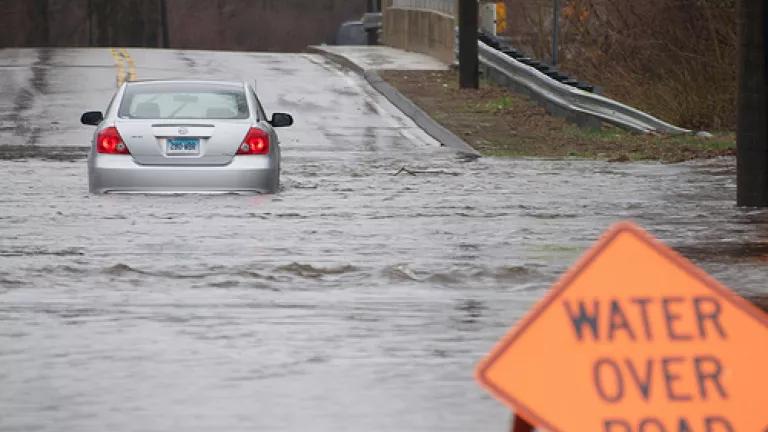
As states across the country grapple with hotter temperatures, more frequent floods, drought, and other extremes, many are factoring how a rapidly warming climate is affecting their ability to protect public health and safety, build resilient communities, support economic growth, and manage natural resources. By seeking to understand their climate risks and vulnerabilities and preparing accordingly, many states are proactively tackling these emerging threats.
Flooding in Norwich, CT (photo by Christopher Harrison)
Connecticut is the latest state to release a comprehensive plan to prepare for climate change impacts. Just a few weeks ago, the state finalized its plan to address impacts on agriculture, infrastructure, natural resources, and public health. To counter these impacts, the state’s Department of Energy and Environmental Protection is undertaking several actions in the near-term, including:
- Incorporating climate change and sea level rise risks into land use planning;
- Partnering with the University of Connecticut to establish a climate resiliency research center to help coastal communities;
- Working with municipalities to make sewage treatment facilities less susceptible to failures; and
- Developing a plan for making energy infrastructure more resilient.
While Connecticut has joined the elite rank of states that are at the forefront of planning and preparing for climate impacts, other states that had previously made substantial progress are taking steps backwards as new governors and legislators come into office. As noted in our Ready or Not report released last year, Alaska, Pennsylvania, and Wisconsin are among the states that once had strong climate preparedness initiatives that have since slowed or stalled. Given what’s been happening lately in the Tar Heel State, you can add North Carolina to that list of backsliders.
In recent elections, increasingly politically conservative candidates have been elected into the General Assembly and the Governor’s Mansion in North Carolina. Consequently, a whole range of anti-science, anti-clean energy, and anti-environment measures have proliferated. Unfortunately, the work of state agencies to use the latest science to plan and prepare for climate change impacts also has been set back by this political shift. As recently as last year, North Carolina’s Department of Environment and Natural Resources had many climate initiatives underway. The state’s Interagency Leadership Team even released a comprehensive strategy for making North Carolina more resilient to climate change.
Now, all that can be heard about climate preparedness from state agencies is the sound of crickets chirping while the list of climate change threats in North Carolina continues to grow, from hotter temperatures to more extreme weather events like drought and heavy downpours. Rising sea levels also are eroding the coast and causing saltwater to contaminate precious groundwater resources, threatening coastal communities and making North Carolina among the most vulnerable states to sea level rise. Higher seas also could contribute to greater flooding, erosion, increased vulnerability to coastal storms, and damage the vitally important tourism economy. In the Outer Banks, tourists contribute nearly $1 billion to the local economy and help to create over 10,000 jobs. Within the next 20 years, however, sea level rise could put at risk over $1.1 billion of property in Dare County alone.
Despite all that is at stake, astonishingly climate change is no longer a focus of state agencies. By not considering how climate change is threatening residents, communities, and natural resources across the state, government officials are failing to plan for the future and are short-changing current and future generations of North Carolinians. State agencies can better prepare for the future by taking climate change seriously and proactively considering climate risks in planning and decision-making. Further, continued investments in solar energy, other renewable sources like wind, and energy efficiency will not only help to reduce the carbon pollution that contributes to climate change but also strengthen the state’s economy.
As states like Connecticut anticipate and prepare for climate change risks, states like North Carolina whose officials are ignoring the science and failing to act are jeopardizing the safety, well-being, and economic competitiveness of their citizens. The people of North Carolina deserve far better and must demand so from those in charge.
